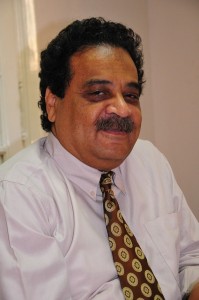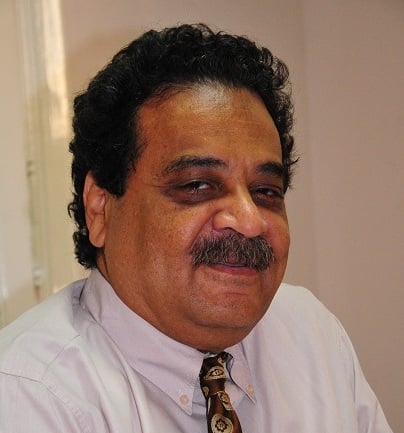
I have attempted over the last several articles, to shed light on the fault lines of the various political and socio-economic divisions that exist within Egyptian society, in addition to the ideologies of those who seek during elections to secure their place within the country’s political system. Traditional left wing theory tells us that social and class divisions are the primary determining factors upon one’s political leanings; however previous parliamentary elections have showed us that this is often not the case, with Egypt’s electorate being split most often along Islamist and secular lines, as opposed to that of rich and poor, or proletariat versus bourgeoisie. We should note that many from Egypt’s upper classes have at times voted in favour of those candidates who have spent time in prison, merely because they represent and epitomise the radical strand of left wing politics. We acknowledge of course social class has a role to play ad effect’s the polarisation that exists within Egyptian society between the country’s secular and Islamist/democratic and repressive forces, the holders of money versus those with power, and the parties of corruption and despair. However another dimension must be added to the spectrum if one considers whether or not a voter considers himself to be from the country’s urban or rural sectors, or, in other words, whether or not someone considers themselves to be, or is seen as, a “native” or “western” Egyptian.
Those who can be described as rural, irrespective of their different sub-sets, do share a number of characteristics in common, among them the close-knit nature of their society, and what this brings with it in the way of close familial and tribal ties, in addition to a conservative political foundation founded on a propensity for self-reliance. Union leaders working in factories in Helwan, for example, may notice that those employees coming from Egypt’s smaller towns and villages are less likely to take confrontational stances towards the factory owners and leadership compared to their counterparts from Cairo, Giza or other urban areas.
Let us move forward to analyse and discuss some of the country’s most prominent political movements such as the Muslim Brotherhood, whose members draw largely from Egypt’s small middle class, in addition to its civil society organisations, or, in more blunt terms, from those in dilapidated cities who can trace their roots to Egypt’s countryside. Salafis on the other hand, mostly consist of rural citizens who have moved to Egypt’s urban areas, or those who remain in the countryside however do not work in the farming sector. That being said, we can say that both movements, the Muslim Brotherhood and Egypt’s Salafis, came about partially as a result of Egypt’s rural citizenry moving to the country’s cities, or, as a result of the lack of urbanization in Egypt’s countryside. The widening of Egypt’s middle class as a result of reforms made under Nasser, in addition to the later sale of oil and petroleum products during the Sadat and Mubarak eras, and what came with it in the way of mass urbanisation and the swelling of the country’s bureaucracy, served to expand the number of those living in between what we would refer to as the country’s traditional social classes, without truly being absorbed into the official structure of the state. As a result, as opposed to urbanising the countryside, or at the very least working to assimilate those moving to Egypt’s cities from the countryside, what has happened instead is the ruralisation of Egypt’s cities. Many of Egypt’s cities, which served as models for urbanisation, have undergone a metamorphosis coming to possess both urban and rural characteristics.
The biggest difference between the Muslim Brotherhood and the country’s Salafis, is that the former have stronger ties to specific swath of the country’s middle class, particularly those living in Egypt’s less developed cities with ties to the countryside. The latter on the other hand, have stronger ties to the countryside itself, particularly those not working in the country’s agricultural sector, and who might consider themselves to be the most affluent, if one may use the term, of those currently living within Egypt’s slums. That being said, Salafi influence in both the countryside and in Egypt’s slums, extends all the way down from the country’s “Affendia” to its merchants and peasants, poor and dispossessed. The influence of the Brotherhood on the other hand, is limited to those professionals, merchants and government employees living in Egypt’s cities, who may possess rural ancestry. As we know, these groups do not only possess an army of supporters numbering in the millions, but are also the loudest of Egypt’s constituencies, exercising the most influence in helping to direct and shape public opinion. It should be noted that the Muslim Brotherhood, via the ballot box, was successful for many years before the revolution in securing large majorities on the governing councils of a number of Egypt’s most influential professional trade unions. This was not, as some seek to interpret, merely the result of negotiations and deals reached between the Brotherhood and the previous regime, but rather a reflection of the influence the Muslim Brotherhood wielded within the ranks of Egypt’s lawyers, doctors’ and engineers. The Brotherhood’s loss in the country’s recent student union and veterinarian, journalist and pharmacist union elections, is therefore a strong indicator of their waning influence in institutions that were previously considered to be their main source of influence.
Consistent with this vision we can say that the Muslim Brotherhood and the country’s Salafis rose to power by representing Egypt’s countryside, bringing along with them conservative notions of self-reliance, that helped them secure their place in the country’s unions and syndicates without having to first pay a social bribe to do so.
The division between Egypt’s urban and rural forces is logical and to be expected, however let me move forward once again to analyse yet another social and cultural split within our society, which can be characterised as that between the “native” and the “western”. Within Egypt’s larger cities in particular, the former term is often used to refer to those who, among other things, can be picked out due to their indigenous style of dress, while the latter term, in addition to others such as affendum, basha etc., is more often than not used in reference to those who adopt western styles of clothing. Since the beginning of the modern era within Egypt, it often has become a point of contention, particularly amongst police officers and public prosecutors, to judge and describe one who is being accused based on whether they are don indigenous or western clothing.
So say we have agreed about the existence of the “indigenous” and the “western”; what can we deduce from that? We will answer this question with another question. Will one find a difference between the political leanings of two individuals, both working in commerce, one from Egypt’s middle class, who works in Mouska, Iraq, with his father, who has employed him since his childhood, whose capital is in the range of EGP 5m, and another, also working in commerce, who is a graduate from the American University of Cairo, also with a total capital of EGP 5m?
Although their capital worth is one in the same, and this, according to traditional leftist thinking, is that which should cause the two to find common ground, the fact that they live in separate worlds means that it should be expected that the two possess different political and socio-economic philosophies. Differences in education and upbringing should not be pointed to as that which may have caused the political split between the two, as it is their separate locations that are the main cause of these radically different experiences with education in the first place.
Unfortunately, political scholars are largely not concerned with grouping people based on these categorisations, instead choosing to limit themselves to grouping people based on a person’s income and/or profession. Much of the literature written by such scholars has become dogma and a source of study for many, but unfortunately does not present an accurate comparison between Egypt’s many sub-sectors and the extent to which they find themselves at odds with each other.
Finally, and before I finish my speech regarding the social and cultural fault lines with which Egypt currently finds itself which can be characterised along socio-economic lines, comparisons between natives and francophone Egyptians, those that possess money versus those with power, the parties of the desperate and the corrupt, and of course the obvious rift between secularists and Islamists, we can say that Egypt’s sectarian divides are widening. This is a reality which will certainly not end during the time of the Muslim Brotherhood. This reality unfortunately, has pushed many to adopt political positions rooted in sectarian-style, group associations.




